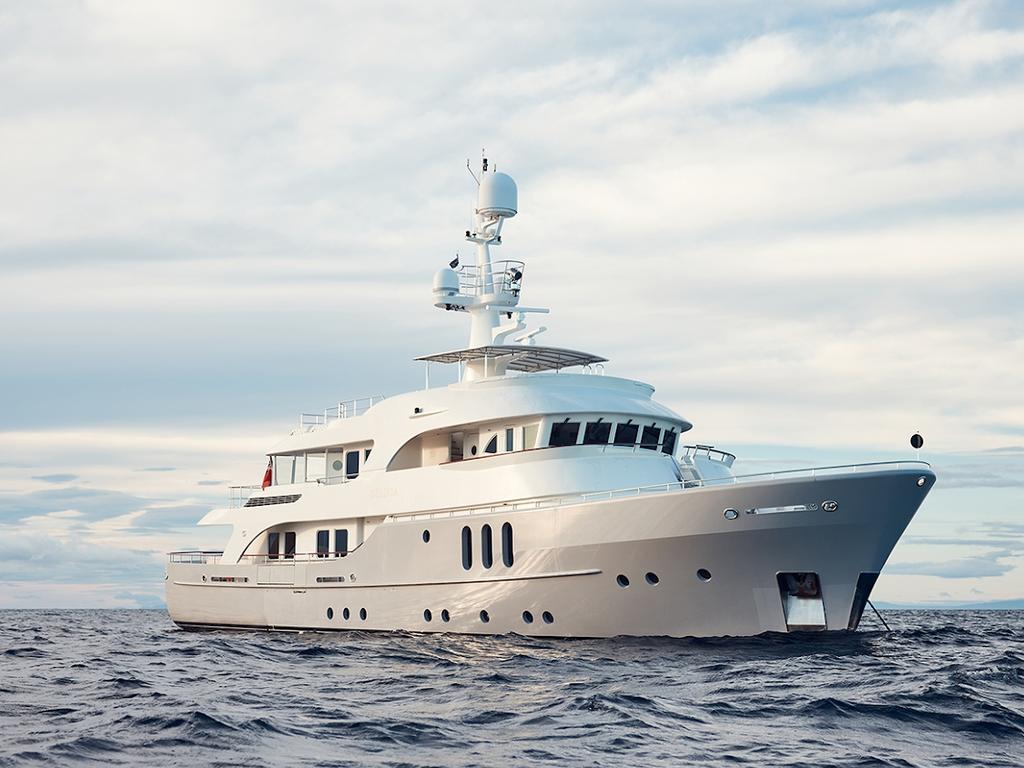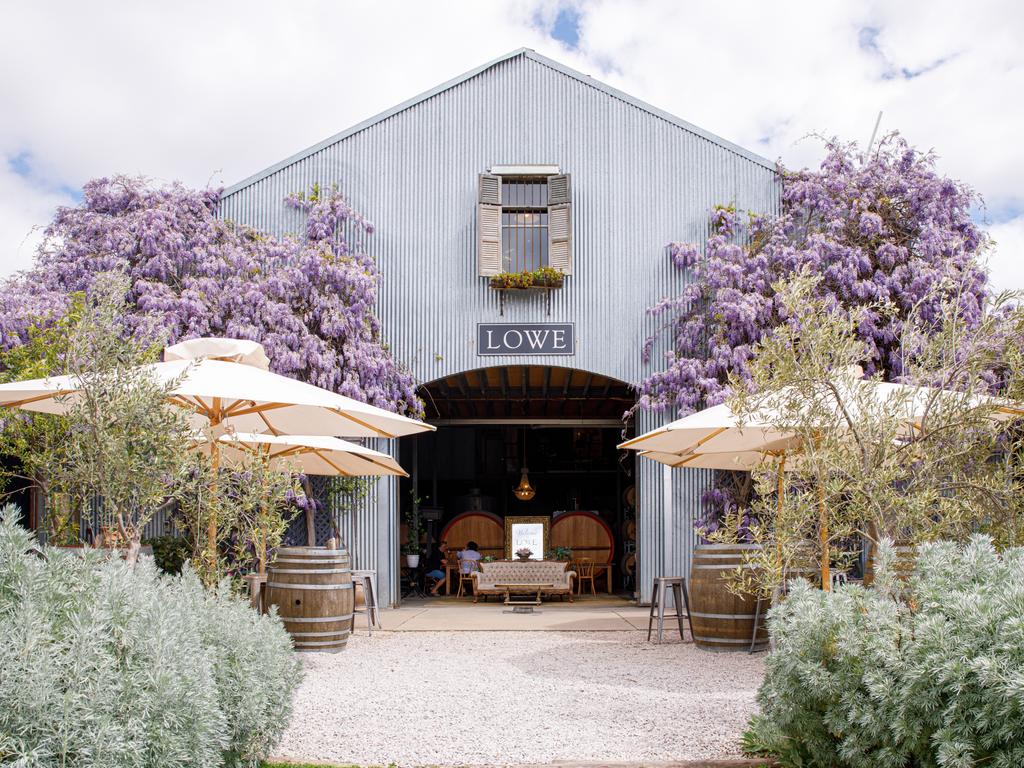More than 25 million people have seen this Titanic exhibition
It is coming to Melbourne and is one of ten historic maritime attractions around the world worth a visit.

Take a voyage back in time at these heritage attractions.
1. Titanic: The Artefact Exhibition
Long after Titanic’s first and only voyage in 1912, the world’s fascination with “the ship of dreams” has not waned. More than 25 million worldwide people have visited Titanic: The Artefact Exhibition, opening at Melbourne Museum on December 18 and running until April 14.

This international touring exhibition includes replica interiors such as a first-class parlour suite, and the ideal spot for living out your Jack-and-Rose cinematic fantasies, the Grand Staircase. Displays provide insights about real passengers and crew, including Australians Evelyn Marsden, a stewardess who survived, and engineer Arthur McRae, who died in the sinking aged 32.

Most compelling of all are the 200-plus objects salvaged from the wreck site, such as a first-class silver-service teapot, an unopened Champagne bottle and the forward masthead light. The exhibition came to Melbourne in 2010 (when more than 465,000 people visited), but this updated version features 173 objects not seen in Australia before; adults $32.50.

2. Titanic Belfast
Can’t get enough Titanic? Visit the museum located where the ship was designed, built and launched. Titanic Belfast, which has an angular design and height inspired by its namesake’s prow, opened in Titanic’s centenary year at the head of the slipway where it first entered the water. Inside, explore more than a century of the ship’s tragic history and legacy across 10 galleries. Among the displays are numerous original artefacts, although there is nothing from the wreck because on the sensivities given it is considered a gravesite. Items retrieved from the ocean surface immediately after Titanic sank, including a deckchair, lifejacket and the violin of the bandleader who famously played on, keep things morbidly fascinating however. General admission (adults £24.95/$48) includes access to the only surviving White Star Line vessel, SS Nomadic, which was the tender for sister ships Titanic and Olympic. Join a guided walking tour of the former shipyard precinct for £10-£15.

3. Queen Mary
Another grande dame of cruising’s golden age, Queen Mary endures as a floating hotel and tourist attraction in Long Beach, California. Making its first Transatlantic crossing in 1936, this Cunard liner was fitted out in Art Deco splendour, including wood panelling and furniture made with 50 types of timber from around the British Empire. Alterations were made when Queen Mary became a World War II troop transport, and then again for its new life Stateside from 1967, but it still has plenty of period glamour. The Glory Days guided tour’s highlights include the Grand Salon’s North Atlantic map mural (the crystal model that once tracked the ship’s progress is now stationary). Other tours showcase enormous remnant machinery, or go ghost hunting in what is considered one of America’s most haunted places. There are also heritage exhibitions, restaurants and a cocktail bar in the former first-class lounge. Suites and staterooms from $US152 a night.

4. SS Great Britain
Cruising began in the 1840s when P&O began offering Mediterranean voyages purely for pleasure. At the same time, SS Great Britain launched with the purpose of transporting passengers, but its ambitious design contributed to cruising’s rise. When it became the first iron steamer to cross the Atlantic in 1845, it was the world’s largest passenger ship and provided unprecedented space and interior design. After an eventful history, including three decades carrying passengers to Australia from 1852, it is now Bristol’s most popular tourist attraction, floating on a sea of glass. The first-class dining saloon remains a must-see with its gilding, mirrors and columns. Treat yourself to afternoon tea here, or consider other extras such as guided tours and climbing the rigging. There’s plenty to see with a general admission ticket (adults £22), including the ship’s underbelly revealed in its original drydock beneath the glass, and the surrounding historic dockyard and museums.

5. SS Misr
Fancy a cruise-heritage experience that actually goes somewhere? Try drifting along the Nile aboard SS Misr. Built in 1918 for the British navy, it underwent a luxurious conversion for Egypt’s King Farouk 20 years later. Restored to its opulent Death on the Nile-style heyday in 2006, this boat operated by Movenpick has 16 cabins and eight suites. On three- to 12-night cruises, SS Misr travels between Aswan, Luxor and Cairo, pausing for tours of ancient wonders such as the pyramids, temples of Philae, Karnak and Luxor, and Valley of the Kings. Back on board your G&T awaits. Choose from several relaxation spaces including the Saraya Lounge for live piano tunes, Dhabiyyat Bar’s posh cocktails, the upper deck’s swimming pool and sunlounges, or shaded wicker armchairs for reading and dreaming closer to the river. Watch Nile views glide by from the restaurant, where you’ll be surrounded by photos of Egyptian monarchs and served by waiters dressed in uniforms that hark back to Farouk’s day; from $800 a person.

6. Hikawa Maru
It wasn’t only Western nations building beautiful big liners during cruising’s golden age. Launched in 1929, the Hikawa Maru carried passengers between Yokohama, Vancouver and Seattle amid restrained Japanese-style Art Deco elegance. Also a World War II hospital ship, it retired in 1961 to the quiet life of a museum ship berthed in Yokohoma. Take a self-guided tour from the bridge to the engine room, the deluxe cabin where Charlie Chaplin stayed to third-class bunk-bed cabins. Other highlights include the broad first-class dining saloon and graceful central stairs, where metal banisters feature the yakumo or “eight clouds” motif associated with the ship’s namesake, Hikawa Shrine. Permanent exhibitions include The Voyage to Seattle, which features items associated with 1930s Pacific crossings; adults ¥300 ($3.20).

7. Le Barcares
A vessel not ever likely to sail anywhere is the Lydia, which has been landlocked without propeller or engines in the French Mediterranean resort town of Le Barcares since 1967. After construction in Copenhagen in 1931, the ship embarked as MV Moonta far away in Australia, where it offered coastal cruises departing Adelaide. Renamed Lydia in 1955, it spent a decade sailing the Mediterranean before becoming Casino le Lydia in Le Barcares. Over the years everything from discos to water slides were added before it closed as an entertainment complex in 2008. Lydia is now open intermittently for tours, exhibitions and events, but it’s always worth looking up at this Aussie ship permanently parked on a French beach.
8. Belle of Louisville
The Mississippi is synonymous with paddleboat cruising, from a few hours’ sightseeing to multi-day cruises. All of those currently operating on this river are modern iterations. For more Scarlett O’Hara-style authenticity try the Ohio River’s Belle of Louisville. Launched in 1914 as Idlewild, it was originally based in Memphis on the Mississippi. Moving to Louisville, Kentucky, in 1931, and renamed Avalon in 1947, this boat offered everything from moonlight cruises with big bands to excursions visiting various American river ports. Restored and renamed Belle of Louisville in 1962, the country’s oldest operating river steamboat now runs two-hour trips such as dinner and narrated history cruises (adults from $US23). Explore three heritage levels, including single-piston engines older than the Belle, and the massive red paddlewheel splashing around at the stern.

9. Lake Geneva
Lake Geneva’s eight restored paddlesteamers look very different to American ones. These smaller, sleeker vessels have a distinctly Belle Epoque style, with light-filled lounges and dining rooms featuring elegant carved blonde wood and marquetry. Mostly commissioned in the early 1900s, with the youngest dating from 1927, these boats have long carried tourists between Swiss towns such as Geneva, Montreux and Lausanne, plus some French ports. The majority still have steam-powered engines, but with Perspex covers so passengers can watch them in action. Regular timetables get you from A to B, but to better appreciate vistas of placid water, snowy mountains, terraced vineyards and charming villages buy a day pass (adults 90 Swiss francs/$156), or book a cruise for lunch or fondue dinner.

10. Duyfken
The precursors of 21st-century cruise liners hundreds of metres in length were wooden sailing ships like the Duyfken. Launched in 1595, this Dutch two-master was less than 20m long, yet it travelled as far as Australia’s Cape York. Never intended for leisure cruising of course, the Duyfken protected the lucrative Dutch spice trade around Indonesia. The original is long gone, damaged beyond repair in a battle with Spanish ships in 1608, but you can board a full-scale replica at the Australian National Maritime Museum in Sydney. Launched in 1999, the reborn Duyfken reveals what life was like for 20 sailors squeezed onto a little ship for months. Access is included with museum entry (adults $25), or sail back in time on a Duyfken Sydney Harbour cruise, 2.30pm Friday-Saturday ($120).
More Coverage





To join the conversation, please log in. Don't have an account? Register
Join the conversation, you are commenting as Logout